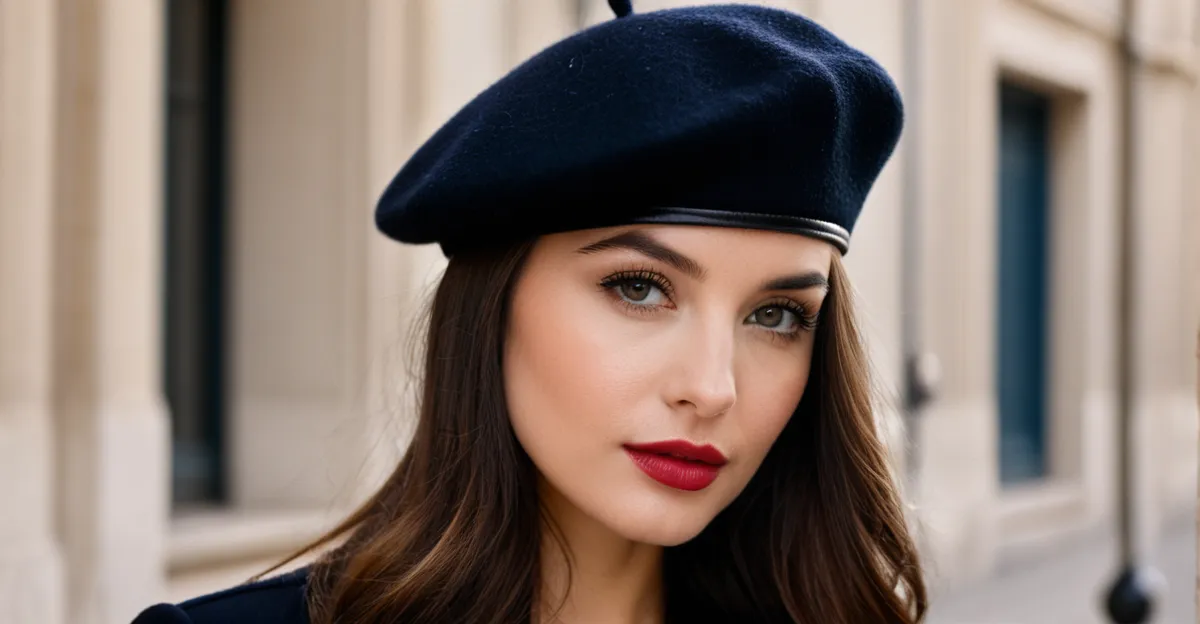The French style beret blends timeless craftsmanship with bold elegance, reflecting over 180 years of heritage rooted in Southwest France. Maison Laulhère preserves this tradition through authentic materials and designs, from classic black to vibrant hues. Whether for everyday wear or special occasions, the beret remains a versatile symbol of French artistry and effortless style, inviting you to embrace its charm with confidence.
Essential Guide to French Style Berets: History, Fashion, and How to Choose
The French beret is more than an accessory—it’s a cultural icon shaped by its roots in southwestern France. The French-style berets collection brings together this national symbol with a focus on authentic craftsmanship, offering both classic and modern interpretations. Traditionally crafted from wool, its shape—round, flat, and finished with a petite tail—reflects both simplicity and elegance, blending practicality with unmistakable French flair.
In parallel : Transform your work wardrobe: chic tweed skirt ensembles for the ultimate uk office style
Historically called the “Basque,” the beret began as a daily staple among Basque villagers but soon gained traction in Paris and urban centers. Today’s leading artisans, such as Maison Laulhère, hold certifications that guarantee quality and maintain a tradition going back to 1840. These renowned labels use high-density merino wool, cotton, leather, or even straw for warmer months, ensuring each piece offers warmth for winter or breathable comfort in summer.
Classic styles emphasize neutral shades—like black, navy, or red—while contemporary designs present embroidered, patterned, or pastel versions. Prices typically range from $35 to $50, with selections available in Paris boutiques, online platforms, and specialty stores across Europe.
Also to read : The ultimate guide to choosing your perfect bucket hat
Styling the French Beret: Practical Advice for Every Look
Correct Ways to Wear and Position a Beret
Precision: Place the beret slightly forward on your forehead, with the band just above the ears, as most French wearers do. The most common styling options are:
- Straight: Wear the beret flat across the head for a classic effect.
- Tilted: Angle the beret gently to one side—traditionally the right—for a modern, minimalist look or to soften sharp facial features.
- Personalized: Adjust to suit your head shape. Round faces may benefit from tilting the beret to lengthen the silhouette, while angular faces often look balanced with a straight style.
Seasonality Tips for Beret Selection
In winter, select merino wool or felt wool berets to maximize warmth and comfort. For summer, opt for lighter materials like woven cotton or straw, which maintain breathability. Layering a beret with a scarf or light knit adds adaptability in chilly seasons, enhancing style and insulation.
Outfit Coordination and Modern Pairings
Pairing remains central to the timeless French look. Match classic black, navy, or red berets with striped tops or trench coats for instant Parisian flair. For a contemporary twist, integrate bold hues or denim berets with relaxed blazers, minimalist dresses, or casual streetwear. Men and women alike can use these tips to ensure a cohesive and striking ensemble in 2025.
Color, Material, and Trends: Choosing the Right Beret for Your Style
Popular colors, meanings, and seasonal trends in French beret fashion
Black, navy, red, and beige remain the most favored beret colors in France. Black is renowned for its elegance and timelessness, often suited for formal occasions. Red exudes artistic vibrancy, while navy and beige offer adaptability that fits both urban and rural styles. Seasonal trends in 2025 introduce lighter shades—like cream and blush—for spring, and richer hues such as forest green and burgundy in autumn and winter. Pastels frequently emerge in summer collections, echoing a playful mood.
Material guide: comparing wool, cotton, leather, and modern fabric innovations for comfort and durability
Wool, especially merino, dominates for autumn and winter, acclaimed for warmth and breathability. Cotton berets, popular in milder months, provide a lighter feel. Leather infuses boldness but may offer less flexibility on fit. Recent years spotlight innovative blends—like angora or technical fabrics—delivering improved elasticity and weather resistance for daily wear.
Style inspiration from French street style and high fashion: embracing both minimalist and bold silhouettes
French street style favors effortless sophistication; classic round berets are often paired with blazers, trench coats, or denim. High fashion experiments with oversized silhouettes, hand-embroidered details, or textural contrasts. Layering with scarves and mixing casual staples—such as jeans—keeps the look grounded yet chic.
Care, Shopping Tips, and Beret as a Lasting Fashion Statement
Care and Maintenance: Keep Your Beret Timeless
Precision: Hand-washing wool berets with cold water and mild detergent prevents shrinking and color loss. Gently blot with a towel, then reshape while damp. Store flat, away from sunlight, to maintain the iconic round silhouette. For stretch or minor distortions, light steaming enables gentle reshaping. Avoid repeated crumpling or stuffing into bags, as this leads to irreversible creases.
Expert Shopping Tips: Sizing and Quality, Demystified
Select a beret by measuring your head at its widest point, then cross-reference with brand sizing—fit matters for both style and warmth. Wool remains the material of choice for winter, while lighter cotton or straw options bring year-round flexibility. Look for artisanal labels or certified origins: Maison Laulhère and select French-beret.com models reflect a blend of tradition and innovation. Prioritize dense, soft materials and neatly finished seams; these are hallmarks of lasting quality.
Beret’s Evolving Role: Subtle Rebellion to Global Classic
No longer reserved for the artist or soldier, today’s beret, whether classic or modern, pops up in Parisian cafés and global fashion blogs alike. It offers an open canvas for artistic expression, suiting casual, formal, and even experimental outfits in 2025’s eclectic wardrobe.











